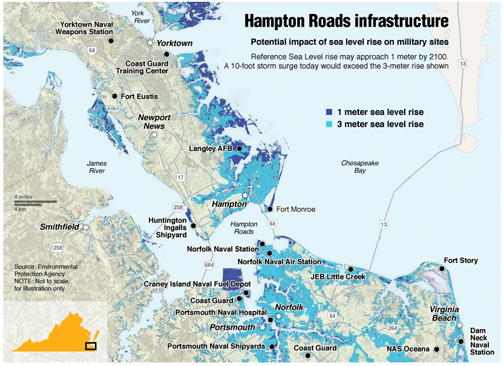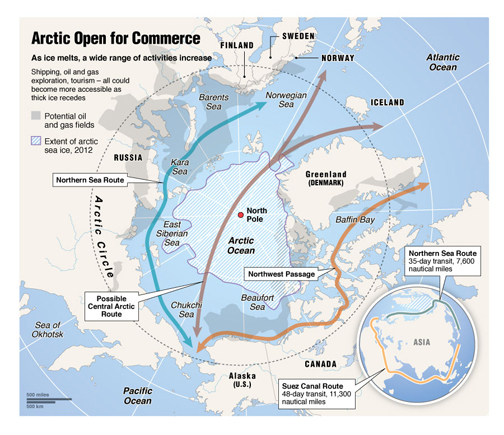More than a dozen military leaders say the impacts of climate change threaten military readiness and response and will increase instability and conflict around the globe.
Their assessments are included in a recent report, National Security and the Accelerating Risks of Climate Change, by the CNA Corporation’s Military Advisory Board. The report’s authors – including 16 retired generals and admirals from the Army, Navy, Air Force, and Marine Corps – conclude that climate change impacts will act as threat multipliers and catalysts. Projected warming, changes in precipitation, sea level rise, and extreme weather events will pose risks to security within the U.S. and abroad.
At home, some of the threats are here and now. Many of the nation’s military installations are in coastal areas vulnerable to rising sea levels and storm surges. For example, the low-lying Hampton Roads area of Virginia is home to 29 military facilities. Sea level in the area is projected to rise 1.5 feet over the next 20-50 years and as much as 7.5 feet by the end of the century. One advisory board member, Brig. Gen. Gerald Galloway, stressed that “unless these threats are identified and addressed, they have the potential to disrupt day-to-day military operations, limit our ability to use our training areas and ranges, and put our installations at risk in the face of extreme weather events.”


